The Scottish Fold Cat, instantly recognizable for its charming folded ears and sweet expression, has captured hearts worldwide. These cats are not just visually appealing; they are known for their affectionate personalities, making them wonderful companions. However, their unique physical trait comes with health considerations that potential owners should be aware of. Let’s delve into the world of the Scottish Fold, exploring their history, characteristics, temperament, and the ethical considerations surrounding this beloved breed.
Fun Fact: Pop superstar Taylor Swift is famously fond of Scottish Fold cats! She owns two named Detective Olivia Benson and Doctor Meredith Grey, often sharing their adorable antics on social media.
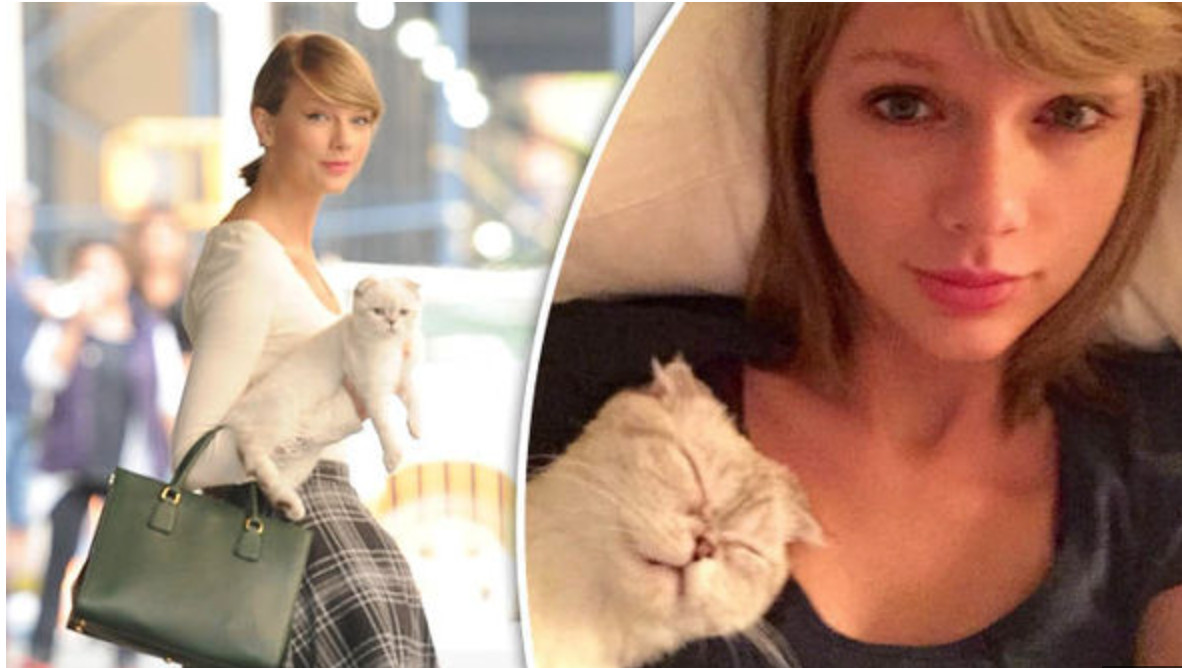 Taylor Swift's Scottish Fold Cats
Taylor Swift's Scottish Fold Cats
Learn more about Taylor Swift’s feline companions here.
Scottish Fold Cat: Quick Breed Facts
- Lifespan: 12 to 14 years on average
- Weight: 6 to 13 pounds typically
- Length: 10 to 12 inches (excluding tail) on average
- Height: 8.5 to 10 inches approximately
- Fun Fact: Many consider the Scottish Fold to be exceptionally cute!
The Fascinating History of the Scottish Fold
As the name suggests, the Scottish Fold breed originated in Scotland. In 1961, in the Tayside region near Coupar Angus, shepherd William Ross noticed a distinctive white farm cat named Susie. What set Susie apart were her uniquely folded ears, an unusual trait not seen in other cats. Remarkably, every Scottish Fold cat alive today can trace its lineage back to this single remarkable feline.
When Susie had kittens, William Ross was captivated and acquired one, a white kitten named Snooks, just like her mother. Susie’s folded ears were the result of a spontaneous genetic mutation. This mutation was dominant, meaning it could be passed down to kittens even if only one parent carried the gene. While not all of Susie’s kittens displayed folded ears, they could still carry the gene.
In 1966, William Ross officially registered the Scottish Fold breed with the Governing Council of the Cat Fancy in the UK. He collaborated with geneticist Pat Turner to understand the inheritance of the ear mutation, confirming it was due to a simple dominant gene. Their breeding program quickly expanded, producing 76 kittens in just three years, with 42 exhibiting folded ears.
Tragically, Susie, the founding mother of the breed, died in a car accident only three months after her first litter. Despite her short life, Susie remains an iconic figure in the cat world, the ancestor of all Scottish Fold cats.
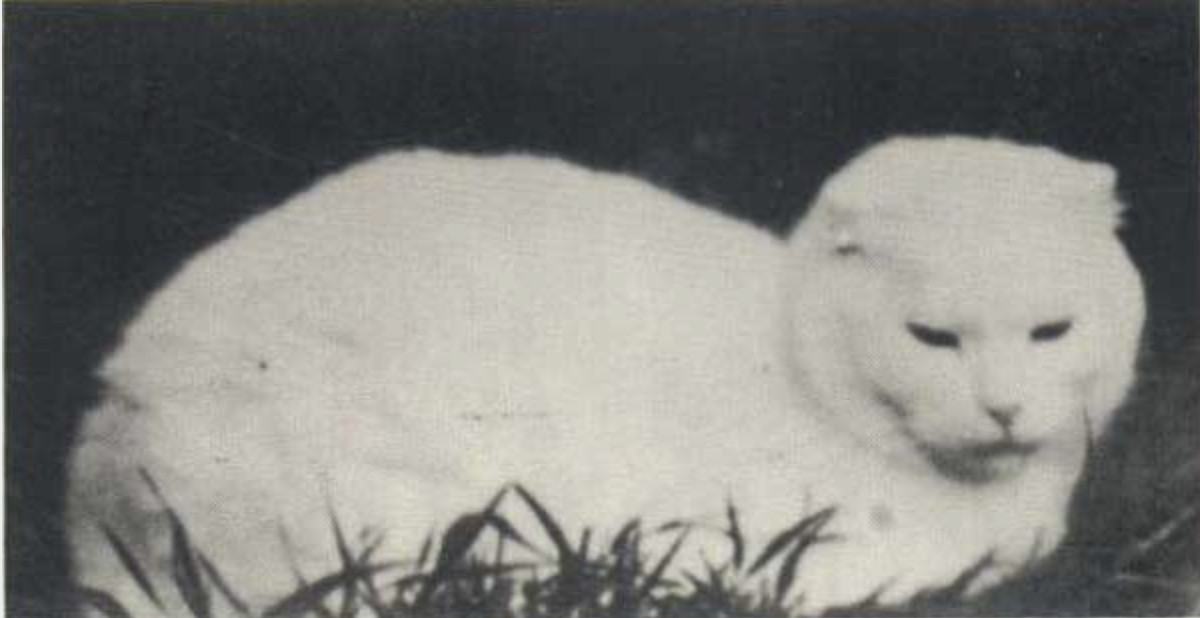 Susie the Original Scottish Fold Cat
Susie the Original Scottish Fold Cat
There’s historical speculation linking Scottish Folds to folded-ear cats described in China as far back as 1796, mentioned in the Universal Magazine of Knowledge and Pleasure. However, whether there’s a true connection or if Susie’s mutation was entirely new remains a mystery. Regardless, Susie is recognized as the modern origin of the Scottish Fold breed.
Did you know? For a brief period, they were called “lop-eared cats” before adopting the name “Scottish Fold.”
Identifying a Scottish Fold Cat: Key Features
The Scottish Fold is a relatively rare breed, emerging from a genetic mutation in the 1960s. Their defining features include rounded faces and bodies, and, of course, their distinctive folded ears, giving them an endearing, owl-like appearance. Their coats come in a wide spectrum of colors, from white to black and everything in between, in solid colors or various patterns. The long-haired version of the Scottish Fold is known as the Highland Fold.
Distinctive Ears
Did you know? Scottish Fold kittens are born with straight ears. The signature fold begins to appear when they are between 18 and 24 days old, and only if they inherit the folding gene. Typically, only about half of a litter will develop folded ears.
Scottish Fold ears can fold in varying degrees: single, double, or triple. A single fold is a slight downward turn at the ear tip, a double fold involves about half the ear folding down, and a triple fold is when the entire ear lies flat against the head. In cat shows where the breed is recognized, the triple fold is often considered the ideal show standard.
Despite their folded shape, Scottish Fold cats use their ears expressively, just like other cats. They can swivel their ears to listen, flatten them when angry, and perk them up when interested, particularly at the sound of treat bags rustling!
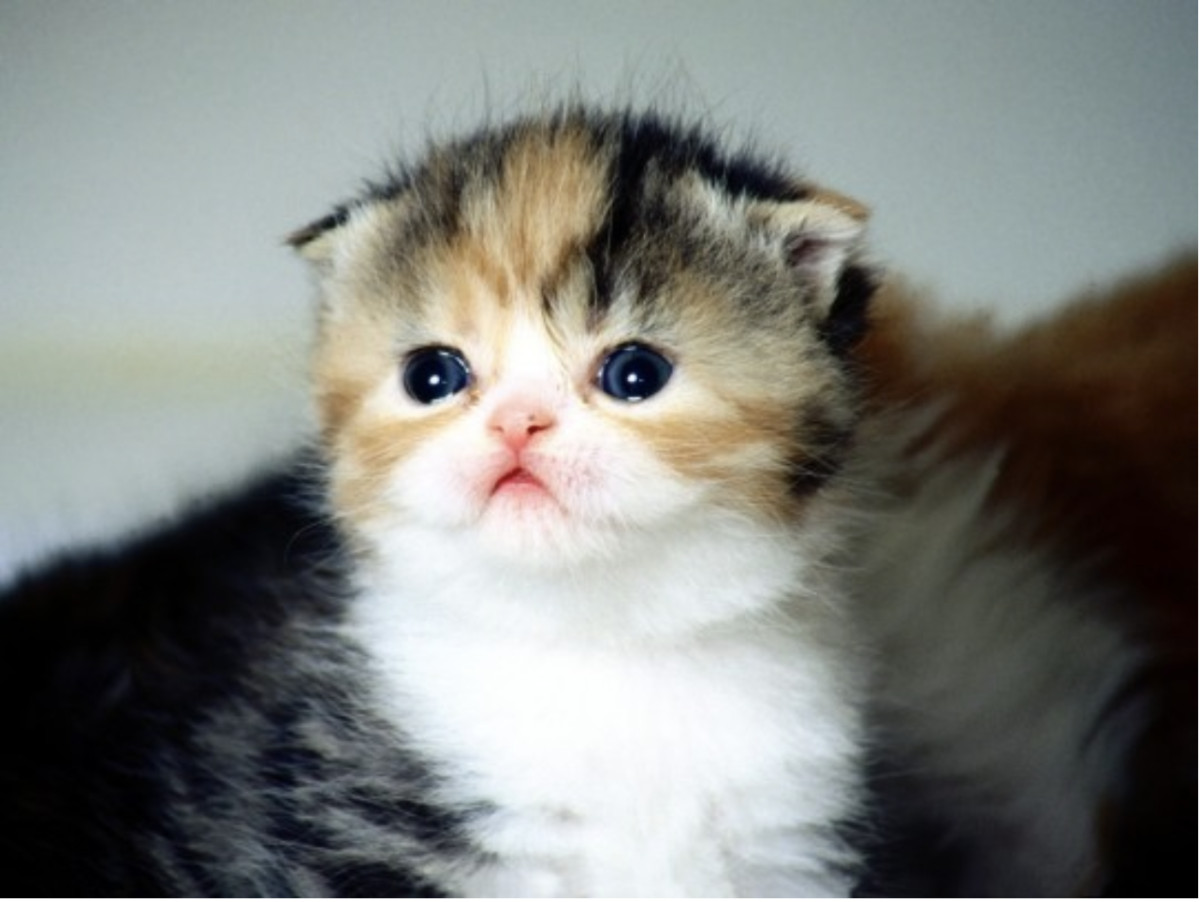 Scottish Fold Cat Ears
Scottish Fold Cat Ears
Rounded Body Shape
Scottish Folds are medium-sized cats known for their rounded physique. Their bodies are characteristically round, especially their heads and faces. They have large, round, and widely spaced eyes, short necks, and a short nose, often appearing somewhat stout or “padded,” which contributes to their cuddly appeal.
Coat Variations
Scottish Fold cats come in both short and long-haired varieties. Even the short-haired Scottish Fold possesses a remarkably dense, plush coat that almost stands on end. Long-haired Scottish Folds are known as Highland Folds, featuring full, feathery fur, especially on the tail, feet, ears, and around the collar, though the fur may be shorter on the face.
Due to health concerns associated with breeding two Scottish Folds together, they have been outcrossed with British and American Shorthair cats for generations. This has resulted in a wide array of coat colors and patterns. However, in the U.S., Scottish Folds with Siamese-type points, chocolate, or lilac fur are not eligible for showing.
Are Scottish Fold Cats Hypoallergenic?
Unfortunately for allergy sufferers, Scottish Fold cats are not hypoallergenic. If you are allergic to cats or have sensitivities, a Scottish Fold, despite their irresistible charm, might trigger your allergies.
Scottish Fold vs. British Shorthair: Key Differences
While Scottish Folds and British Shorthairs share some physical similarities, there are distinct differences. Besides the signature folded ears of the Scottish Fold, British Shorthairs tend to be larger and heavier.
British Shorthairs have a dense, short coat requiring regular brushing (about once a week), whereas Scottish Fold coat care varies with coat length, potentially needing more or less frequent brushing.
Neither breed is excessively active, preferring relaxation to high-energy play. However, Scottish Folds are generally considered more affectionate and people-oriented, while British Shorthairs tend to be more independent.
Scottish Fold Temperament: Loving and Social
Scottish Fold cats are renowned for their friendly and affectionate nature towards humans. They thrive on attention and often become devoted followers of their owners. However, they can become bored and potentially destructive if left alone for extended periods. Scottish Folds are known to be quite expressive and will certainly communicate their needs and feelings.
They are typically quiet and calm cats, vocalizing mainly when they desire something or are distressed. While not overly loud, they are known for producing a diverse range of vocalizations. Scottish Folds are skilled climbers and enjoy elevated vantage points. Despite their somewhat laid-back nature, they need adequate exercise and, above all, love to play and have fun.
Interestingly, Scottish Folds often form a particularly strong bond with one person in the household, similar to dogs in their loyalty. While they will accept affection from other family members, their primary attachment becomes quite apparent.
Understanding Scottish Fold Emotions
Like all cats, Scottish Folds communicate through body language. A common sign of affection is kneading, where they gently paw with retracted claws.
Reading their emotions is similar to understanding any cat. Half-closed eyes signal contentment, while wide eyes with dilated pupils might indicate playfulness or impending pounce. Narrowed eyes suggest displeasure, and it’s best to avoid approaching them for cuddles in this state.
Unlike dogs, a wagging tail in a cat signifies unhappiness. An arched back also indicates a negative mood. Learning to interpret these subtle cues will help you better understand and interact with your Scottish Fold.
Did you know? Maru, a Scottish Fold from Japan, holds a Guinness World Record for the most-viewed animal on YouTube, with over 325 million views!
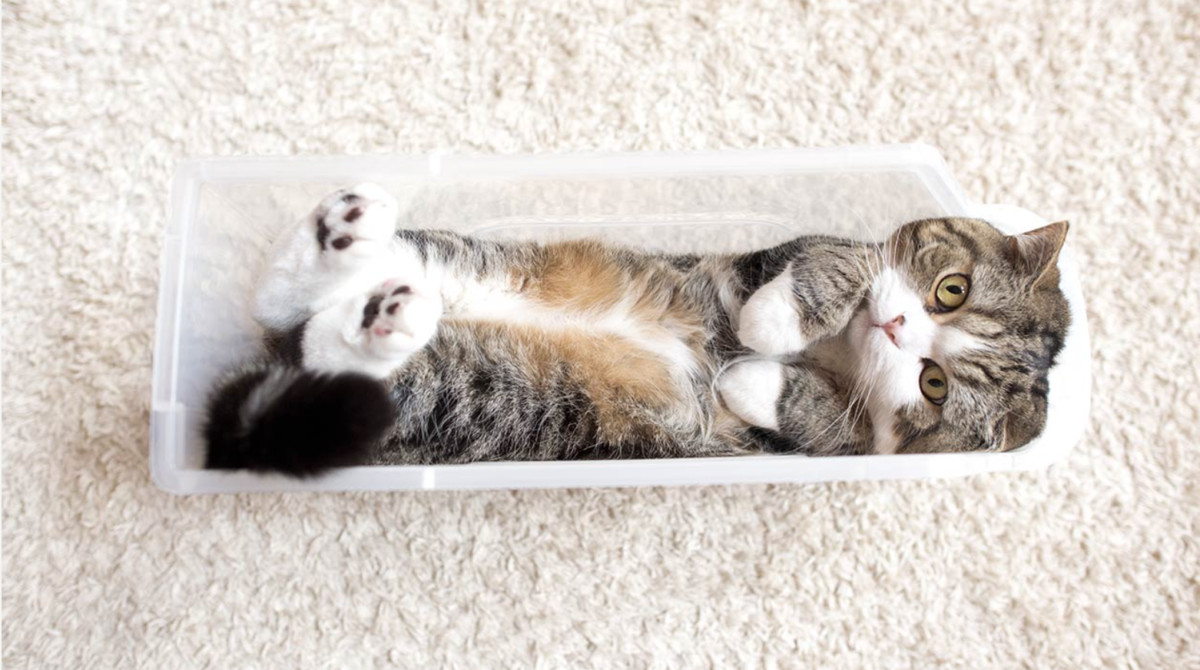 Maru the Scottish Fold Cat
Maru the Scottish Fold Cat
Unique Habits of Scottish Fold Cats
Scottish Folds generally enjoy being outdoors and appreciate outdoor activities and stimulating play.
They are known for their somewhat stubborn streak and strongly dislike loneliness, even showing signs of depression when isolated.
Scottish Folds are also famous for their peculiar postures, including unusual sleeping positions like sleeping on their backs. They are also known for sitting upright with legs extended and paws on their belly, often referred to as the “Buddha position.”
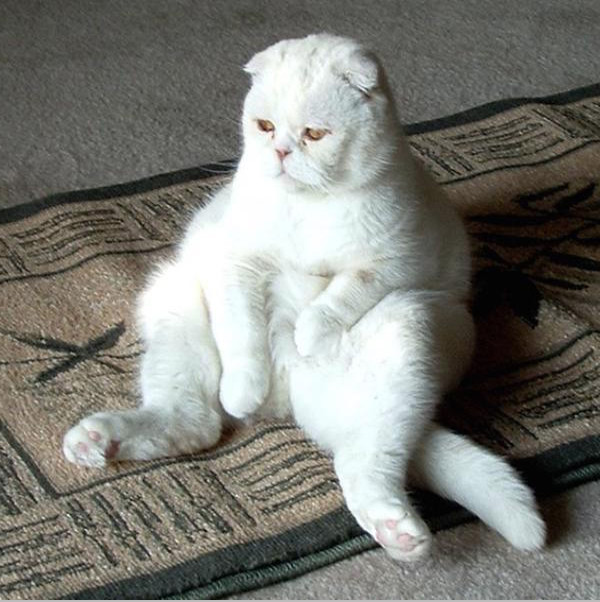 Scottish Fold Buddha Position
Scottish Fold Buddha Position
Grooming Your Scottish Fold
- Short-haired Scottish Folds: Weekly grooming is sufficient to maintain a clean and shiny coat.
- Highland Folds (long-haired): Require combing at least twice a week to prevent mats and tangles.
- Nail Trimming: Regular nail trimming, usually weekly, is needed, depending on whether they are primarily indoor or outdoor cats.
- Ear Cleaning: Due to their folded ears, weekly ear checks and cleaning are essential to prevent infections.
- Dental Care: Frequent teeth brushing with vet-approved pet toothpaste is recommended for overall health and fresh breath.
It’s beneficial to start nail trimming and teeth brushing routines early in kittenhood to acclimate your Scottish Fold to these procedures. Introducing a toothbrush to an older cat unfamiliar with it is likely to be met with resistance!
Scottish Fold Health and Nutrition
Scottish Folds, with their endearing folded ears, have specific health concerns linked to the same genetic mutation responsible for their unique ears. The weakened cartilage affecting their ears also impacts cartilage in their joints, predisposing them to health issues.
Therefore, a diet rich in protein and low in carbohydrates is crucial. This supports joint health and helps prevent excessive weight gain, a risk for this breed known for its less active lifestyle.
Digestive System Considerations
While Scottish Folds may look different from their wildcat ancestors, their digestive system remains similar. They tend to have sensitive stomachs and can react negatively to carbohydrates. Their diet should primarily consist of meat, cartilage, and bones, mirroring a more natural feline diet.
Should Scottish Fold Breeding Be Banned? Ethical Concerns
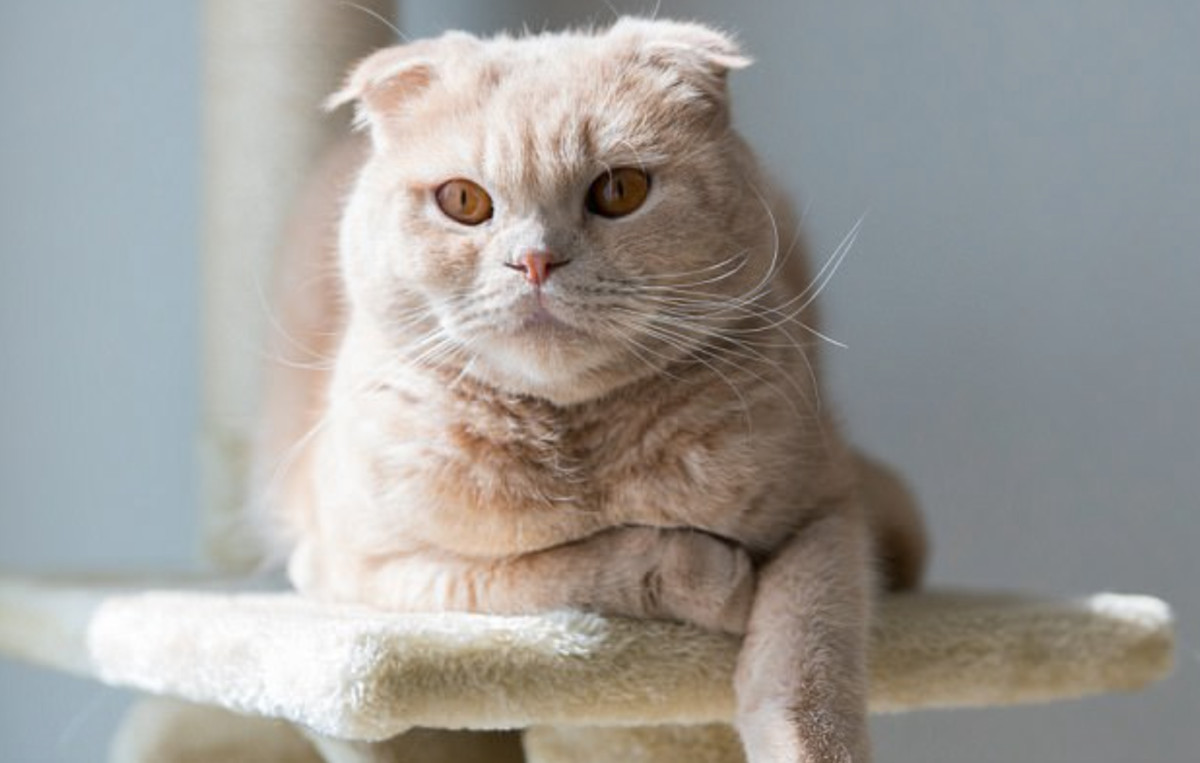 Scottish Fold Health Concerns
Scottish Fold Health Concerns
The very genetic mutation that makes Scottish Folds so adorable also causes significant health problems, leading animal welfare advocates to call for a ban on breeding them.
Gudrun Ravetz, president of the British Veterinary Association, states, “People are wanting to have these cats because of how popular they have become with celebrities and on social media, but unfortunately it is another example of us prioritising how a pet looks rather than their quality of life.”
The cartilage deformity affects not only the ears but also other parts of the body. This genetic mutation, present in all Scottish Folds, often leads to osteochondrodysplasia, a painful, incurable, and lifelong form of arthritis.
The Governing Council of the Cat Fancy in the UK stopped registering Scottish Folds in the early 1970s due to concerns about ear disorders and hearing problems. While their popularity declined in the UK initially, they continued to gain popularity in the U.S.
Breed proponents argue that responsible breeders avoid mating two Scottish Folds, instead crossing them with breeds like American or British Shorthairs, which they claim reduces the likelihood of congenital health issues.
However, Ms. Ravetz from the British Veterinary Association refutes this, stating, “All cats with this folded ear appearance will have the genetic mutation. The rate at which they get the disease and the severity of the disease can be different but they will all to some degree have an incurable, painful and lifelong disease. We should not be breeding pets that can have these problems.”
Currently, there is no breeding ban on Scottish Folds in the UK or general restrictions on cat breeding, but the Scottish government has considered introducing a ban. The veterinary journal Vet Record has also announced a review of using Scottish Fold cats in their advertisements.
Get Creative: Make an Origami Cat!
Feeling crafty? Try making this origami cat! You can even fold the ears down to resemble a Scottish Fold!

